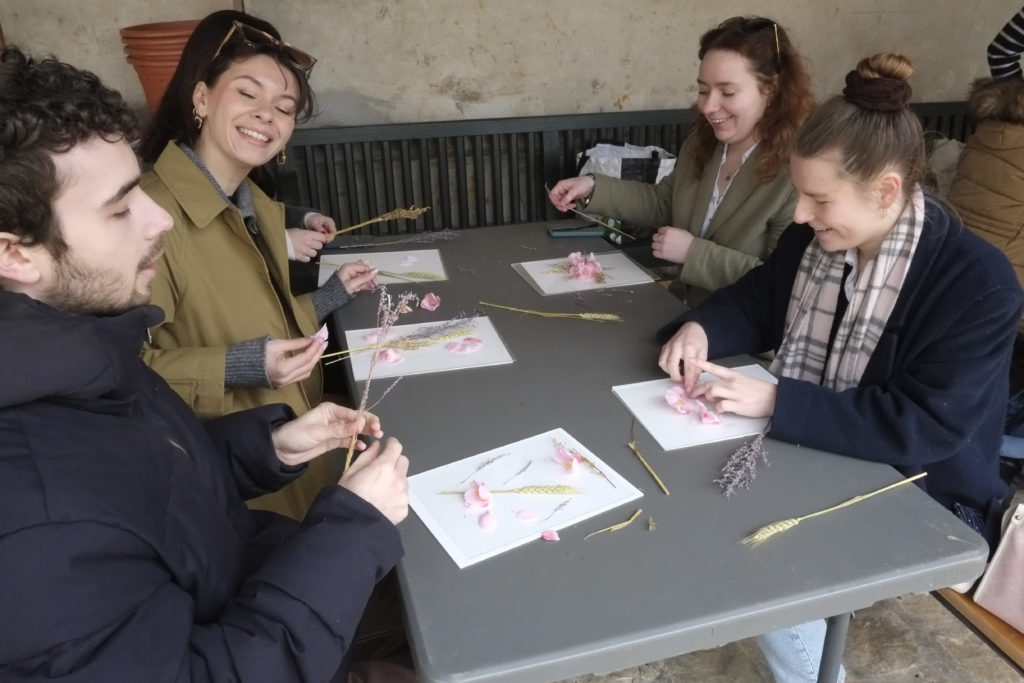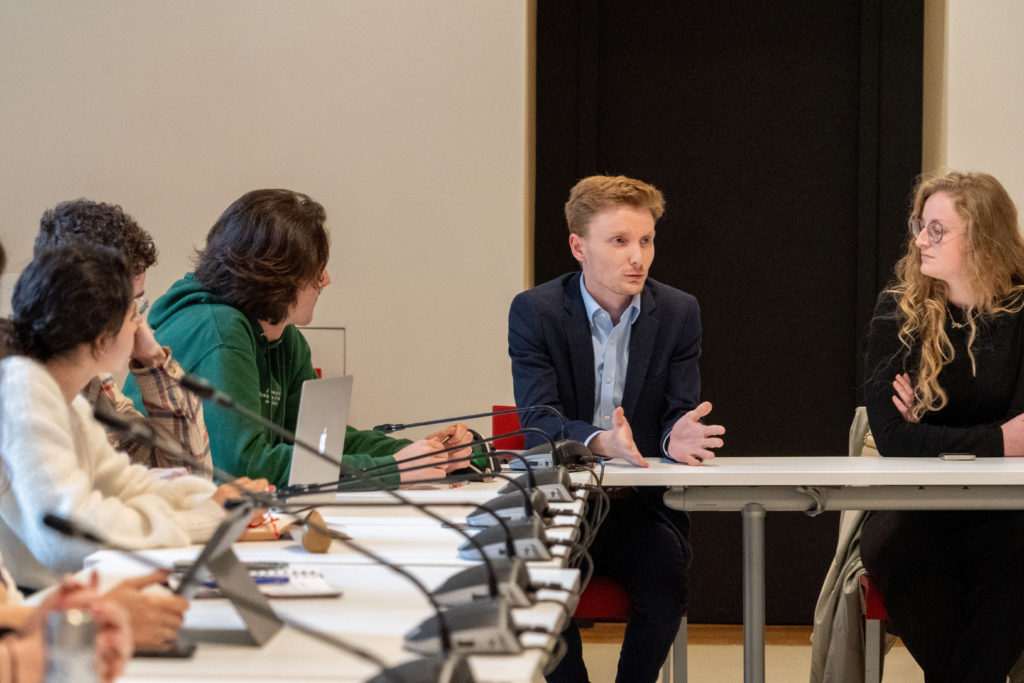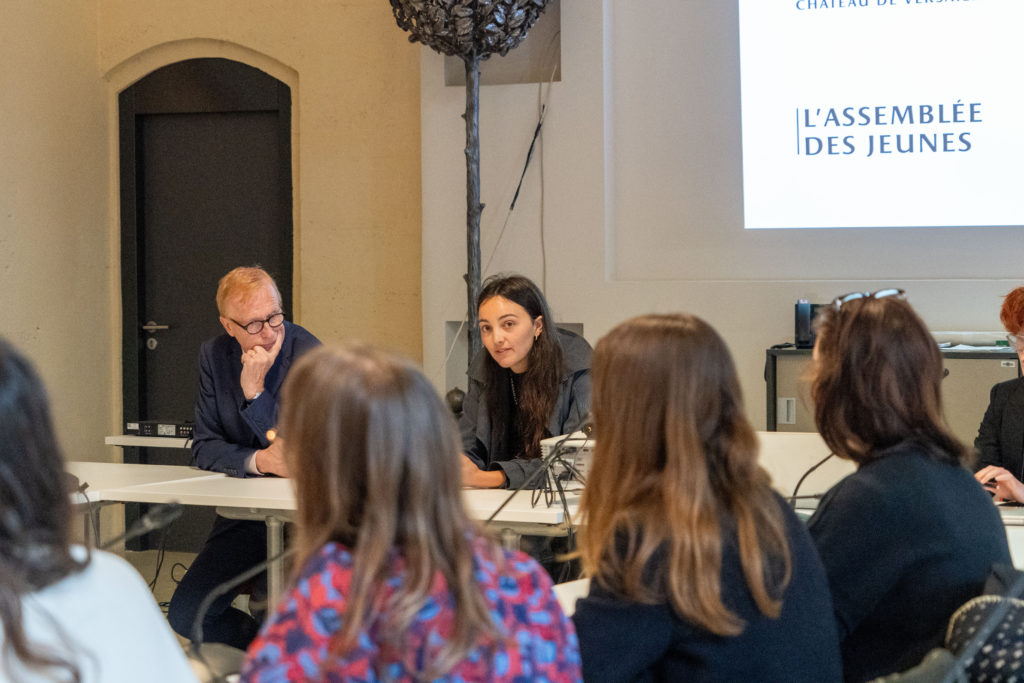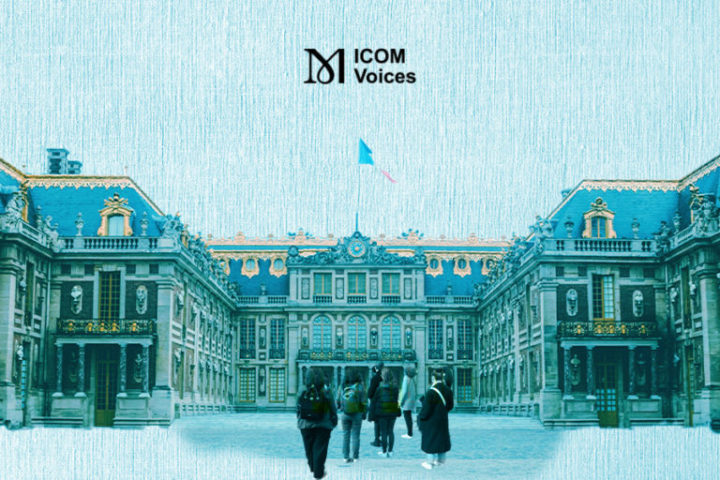
Servane Hardouin-Delorme
Head of cultural projects at the Château de Versailles (France) and Director of the Youth Assembly programme
Museums have no borders,
they have a network
June 18, 2024
Keywords: cultural mediation, public participation, social role of the museum, sustainable development, citizenship
Between museum participation and citizenship
The Château de Versailles is unique in that it is at once a museum, a historic monument and a political symbol, the scene of the French Revolution, parliamentary assemblies during the Third Republic, the election of the President of the Fourth Republic, and today’s Constitutional Congresses.
In keeping with this political identity, the Château de Versailles offers a range of cultural and educational programmes for its different audiences on the theme of citizenship. One such programme, the Youth Assembly, was launched to allow students and young adults to exercise their citizenship within the Château. The programme aims to give a representative group of young citizens the opportunity to learn how a museum operates, meet those who work there, and reflect and express their views on the links between museums and society.
In its efforts to be participatory and innovative, the programme drew inspiration from a variety of sources, including the English-speaking model of encouraging young people to participate in museums through ‘Youth Collectives’[1] and the French model of ‘Regional Youth Councils’[2] . Both models aim to give a group of committed young people a voice and a way to make it heard, by training and informing youth and ensuring that the museum listens to them.
THE YOUTH ASSEMBLY
Youth Assembly candidates applied using a registration form found on the Château’s website, social media and newsletter. In addition to their CVs, candidates were selected based on their age (between 16 and 28), interest in one of the three pillars of the programme (culture, ecology and citizenship) and availability (ability to travel to the Château by public transport).
The selected group was made up of 65% full-time students, 15% work-study students, 15% young professionals and 5% young people in training or looking for work, with an average age of 22. Members included both young people who were familiar with the Château and those who were not, with 10% having never been to the Château before the start of the programme. Finally, 70% of the young people were from the Île-de-France region (in the centre of which Paris is located) a result of the need to travel to the Château by public transport.
In order to encourage the widest possible participation, the programme formats were flexible and tailored to the young people’s needs in two ways: first, everyone completed a survey indicating their time constraints, including their availability at weekends and on weekday evenings; second, meetings included a combination of in-person sessions in Versailles and remote videoconferences, as well as in-person sessions with employees in Paris.


Discussing the idea of sustainable museums
The Youth Assembly was asked to consider the question: “What kind of sustainable, civic-minded museum and estate do you see at Versailles in the future?”
This theme focused on the field of cultural mediation and how audiences can be made aware of sustainable development and citizenship through mediation. The aim was for the young people to spend the year reflecting on and developing a range of proposals to shift cultural mediation programmes towards greater ecological and civic awareness.
The programme combined three formats. In person, the young people participated in tours and workshops exploring the possibilities and challenges of mediation at the Château, including a visit to the royal apartments, an artistic workshop on floral cyanotypes, a mock trial in the Congress Chamber, and other activities. Via videoconference, cultural experts from the Château and other national museums (Musée du Quai Branly), departmental museums (Musée Breton in Quimper) and municipal museums (Musée Carnavalet) gave presentations on their professions. Finally, the young people came together for monthly discussions with the project team to review their visits and meetings, ask questions, collectively reflect and make proposals.
The Assembly’s activities were guided by three thematic pillars: cultural mediation, ecology and citizenship. The young people therefore met with Château staff members ranging from the head of cultural mediation to an exhibition curator, the head of fountain maintenance and the head of the sustainable management plan. Their reflection on civic engagement was informed by a meeting with eight members of parliament from the Committee on Cultural Affairs and Education, organised in collaboration with the National Assembly[3], and by presentations of participatory programmes developed by other cultural organisations like Les Champs Libres in Rennes.


Challenges of participating in the museum
The first year of the programme was designed as an experiment that was adjusted over time according to the challenges observed by the project team and reported by the young people.
The first challenge was availability. When organising meetings outside the academic environment, professionals and students had incompatible schedules, as professionals are generally unavailable during evenings and weekends. Furthermore, as the young people were never all available at the same time, every activity inevitably excluded part of the audience, which created dissatisfaction. It seems that, where the programme wanted to offer flexibility, it would have been preferable to determine specific time slots from the outset and make applications conditional upon availability during those times.
In terms of content, the initial programme agenda was adjusted over time in line with the young people’s wishes. For example, after talking to staff from the Musée Carnavalet, the group became curious about the themes of accessibility and disability, so the project team organised a meeting with the Château’s special audiences team to answer their questions.
Finally, the young people’s discussions required structure. Simply providing a space for discussion was not enough to stimulate co-construction. It was therefore necessary to organise the discussion, with the facilitator having to be both absent, because the young people were asked at each meeting to choose the topics for discussion themselves and the facilitator was only there to answer their basic questions, and a structuring presence, because with the young people’s initial shyness and lack of confidence, they had to be guided through three clearly isolated stages: choice of a topic, identification of problems, and proposals of ideas to address them.
What next?
By the end of the year, the young people had developed some 15 concrete proposals in response to the initial discussion question. Their proposals will be presented publicly on 21 and 22 June 2024 at the ‘Citizen Museums’ conference[4] organised by the Château de Versailles.
An anonymous qualitative survey will be conducted among the young people during the summer of 2024 to obtain their critical feedback on the programme. The survey results will inform ongoing discussions on the second Youth Assembly and the implementation of the proposals developed by the first Assembly.
Notes
[1] A number of English-speaking museums have created groups of 10 to 20 young people, generally ages 15 to 25, who participate in the museum’s outreach activities for one year. Examples include the British Museum’s Youth Collective, the Pitt Rivers Museum’s Youth Action Team and the National Gallery of Australia’s Youth Council.
[2] Most French regions have created groups of 70 to 130 young people, generally ages 15 to 29, who serve a one- or two-year term in a consultative and proposal-making role. Examples include the Regional Young People’s Council (Conseil Régional des Jeunes) in the Grand Est region, the Regional Youth Council (Conseil Régional de la Jeunesse) in the Centre-Val-de-Loire region, and the Regional Youth Parliament (Parlement Régional de la Jeunesse) in the Sud region.
[3] The National Assembly is one of the two chambers of the French Parliament. Together with the Senate, it forms the legislative branch, whose mission is to make laws and oversee the government.
[4] A two-day conference on the social role of museums, organised by the Château de Versailles in partnership with students from the Institut d’Études Politiques (IEP) in Lille.
